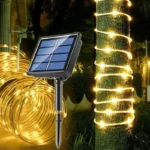Earth Day is an annual event celebrated on April 22nd to demonstrate support for environmental protection. It was first celebrated in 1970 and has since grown into a global movement, with millions of people participating in various activities to promote sustainability and raise awareness about the importance of protecting our planet.
One of the key aspects of Earth Day is the focus on renewable energy sources, such as solar power. Solar power is the conversion of sunlight into electricity using photovoltaic cells. It is a clean and sustainable source of energy that has numerous benefits for both individuals and the environment.
Understanding the Benefits of Solar Power
One of the most significant benefits of solar power is the cost savings on energy bills. By installing solar panels on your property, you can generate your own electricity and reduce your reliance on the grid. This can lead to substantial savings over time, as you will be producing your own energy instead of purchasing it from a utility company.
In addition to cost savings, solar power also helps to reduce your carbon footprint. Traditional electricity generation relies heavily on fossil fuels, which release harmful greenhouse gases into the atmosphere. By switching to solar power, you can significantly reduce your emissions and contribute to mitigating climate change.
Another advantage of solar power is that it can increase the value of your property. Studies have shown that homes equipped with solar panels tend to sell for a higher price compared to those without. This is because potential buyers recognize the long-term cost savings and environmental benefits associated with solar power.
Furthermore, solar power provides energy independence. With a solar panel system installed on your property, you are no longer reliant on the grid for electricity. This means that even during power outages or emergencies, you will still have access to electricity. This can be particularly beneficial for those living in remote areas or regions prone to natural disasters.
How Solar Power Works
Solar power works by harnessing the energy from the sun and converting it into usable electricity. This process is made possible through the use of photovoltaic cells, which are commonly referred to as solar panels. These cells are made up of semiconductor materials, such as silicon, that absorb sunlight and release electrons, creating an electric current.
Once the sunlight is absorbed by the photovoltaic cells, it is converted into direct current (DC) electricity. However, most homes and businesses use alternating current (AC) electricity, so an inverter is required to convert the DC electricity into AC electricity. The inverter also ensures that the electricity produced by the solar panels is compatible with the electrical system of the property.
Battery storage is another important component of a solar power system. While solar panels generate electricity during daylight hours, excess energy can be stored in batteries for use during nighttime or when there is limited sunlight. This allows for a continuous supply of electricity even when the sun is not shining.
The Environmental Impact of Solar Power
Solar power has a significant positive impact on the environment. One of the most notable benefits is the reduction in greenhouse gas emissions. Traditional methods of electricity generation, such as burning fossil fuels, release large amounts of carbon dioxide and other greenhouse gases into the atmosphere. These gases contribute to global warming and climate change. By switching to solar power, we can reduce our reliance on fossil fuels and significantly decrease our carbon footprint.
Furthermore, solar power helps conserve natural resources. Fossil fuels are finite resources that take millions of years to form. By using solar power instead, we can preserve these valuable resources for future generations. Solar power also reduces the need for destructive practices such as mining and drilling, which can have detrimental effects on ecosystems and wildlife habitats.
Solar power systems have minimal impact on wildlife habitats compared to traditional energy sources. Large-scale solar farms can be designed to minimize disruption to local ecosystems and wildlife migration patterns. Additionally, solar panels can be installed on rooftops and other existing structures, reducing the need for land clearing and habitat destruction.
Solar Power for Residential Use
Solar power is becoming increasingly popular for residential use. There are several types of residential solar systems available, including grid-tied systems, off-grid systems, and hybrid systems. Grid-tied systems are the most common and are connected to the local utility grid. They allow homeowners to generate their own electricity while still being able to draw power from the grid when needed.
The installation process for residential solar systems typically involves assessing the property’s suitability for solar panels, designing the system, obtaining necessary permits, and finally installing the panels. It is important to hire a reputable installer who can ensure that the system is installed correctly and safely.
Once the system is installed, regular maintenance and upkeep are required to ensure optimal performance. This includes cleaning the panels, checking for any damage or obstructions, and monitoring the system’s output. Most solar panel manufacturers provide warranties and maintenance plans to help homeowners maintain their systems.
Solar Power for Commercial Use
Solar power also offers numerous benefits for businesses. One of the main advantages is cost savings on energy bills. By generating their own electricity, businesses can significantly reduce their operating costs and increase their profitability. This is particularly beneficial for industries with high energy consumption, such as manufacturing and agriculture.
There are different types of commercial solar systems available, including rooftop systems, ground-mounted systems, and solar carports. The choice of system depends on factors such as available space, energy requirements, and budget. Commercial solar systems can be customized to meet the specific needs of each business.
Financing options are available to help businesses transition to solar power. These include power purchase agreements (PPAs), where a third party owns and maintains the solar system while the business purchases the electricity generated at a predetermined rate. Another option is leasing, where the business leases the solar system and pays a fixed monthly fee.
The Future of Solar Power
The future of solar power looks promising, with advancements in technology and increasing adoption rates. Researchers and scientists are constantly working on improving the efficiency and affordability of solar panels. This includes developing new materials and manufacturing techniques that can enhance the performance of photovoltaic cells.
As the cost of solar power continues to decrease, more individuals and businesses are expected to make the switch. The potential for increased adoption is significant, especially as governments and organizations around the world prioritize renewable energy sources to combat climate change.
Solar power plays a crucial role in combating climate change by reducing greenhouse gas emissions and promoting sustainability. As the world continues to grapple with the effects of global warming, solar power offers a viable solution for transitioning to a low-carbon economy.
Solar Power Incentives and Rebates
To encourage the adoption of solar power, there are various incentives and rebates available at both the federal and state levels. These incentives can help offset the upfront costs of installing a solar system and make it more affordable for homeowners and businesses.
One of the most significant incentives is the federal investment tax credit (ITC), which allows homeowners and businesses to deduct a percentage of the cost of their solar system from their federal taxes. The ITC currently offers a 26% tax credit for residential and commercial solar installations.
In addition to federal incentives, many states offer their own incentives and rebate programs. These can include cash rebates, grants, property tax exemptions, and sales tax exemptions. It is important to research the incentives available in your area to maximize your savings when switching to solar power.
Choosing the Right Solar Power System
When choosing a solar power system, there are several factors to consider. These include the size and capacity of the system, the quality of the components, and the reputation of the installer.
The size and capacity of the system depend on factors such as energy consumption, available space for solar panels, and budget. It is important to accurately assess your energy needs to ensure that the system can meet your requirements.
The quality of the components is crucial for the long-term performance and durability of the system. It is recommended to choose reputable manufacturers and installers who use high-quality materials and equipment. This will ensure that your solar system operates efficiently and lasts for many years.
Making the Switch to Solar Power – Tips and Tricks
Making the switch to solar power can seem overwhelming, but with the right information and resources, it can be a smooth transition. Here are some tips and tricks to help you get started:
1. Research reputable installers: Take the time to research and compare different solar installers in your area. Look for companies with a proven track record, positive customer reviews, and certifications from reputable organizations.
2. Explore financing options: There are various financing options available to help make solar power more affordable. These include loans, leases, and power purchase agreements. Research the different options and choose the one that best suits your financial situation.
3. Maximize energy savings: To maximize your energy savings, consider implementing energy-efficient practices in your home or business. This can include using energy-efficient appliances, installing LED lighting, and implementing smart energy management systems.
Solar power is a clean and sustainable source of energy that offers numerous benefits for individuals, businesses, and the environment. By harnessing the power of the sun, we can reduce our reliance on fossil fuels, decrease our carbon footprint, and contribute to mitigating climate change.
The cost savings on energy bills, increased property value, and energy independence are just some of the advantages of solar power. With advancements in technology and increasing adoption rates, the future of solar power looks promising.
By taking advantage of incentives and rebates, choosing the right solar power system, and making informed decisions, individuals and businesses can make the switch to solar power and contribute to a more sustainable future. It is time to embrace renewable energy sources and take action to protect our planet.
If you’re interested in harnessing the power of the sun to reduce your carbon footprint, you’ll definitely want to check out Iowa Solar Sales. They offer a wide range of solar power solutions, including solar panels for charging electric cars. In fact, their article on “How Many Solar Panels Do I Need to Charge My Electric Car?” provides valuable insights into this topic. With the increasing popularity of electric vehicles, it’s important to understand how solar power and electric cars go hand in hand for a greener lifestyle. Iowa Solar Sales also explores the global efforts to combat climate change in their article “A New Chapter: US-China Efforts to Fight Climate Change.” Additionally, they delve into the benefits of solar battery storage during rolling blackouts and how it can help stabilize the electrical grid. To learn more about these fascinating topics, visit Iowa Solar Sales today!
FAQs
What is solar power?
Solar power is the conversion of energy from sunlight into electricity, either directly using photovoltaics (PV), or indirectly using concentrated solar power (CSP).
How does solar power work?
Solar power works by capturing the energy from the sun and converting it into electricity. This is done through the use of solar panels, which are made up of photovoltaic cells that convert sunlight into direct current (DC) electricity.
What are the benefits of using solar power?
The benefits of using solar power include reducing your carbon footprint, saving money on energy bills, and increasing energy independence. Solar power is also a renewable energy source, meaning it will never run out.
How much does it cost to install solar panels?
The cost of installing solar panels varies depending on a number of factors, including the size of the system, the location, and the type of panels used. However, the cost has decreased significantly in recent years, making it more affordable for homeowners and businesses.
What is net metering?
Net metering is a billing arrangement that allows homeowners and businesses with solar panels to receive credit for excess electricity they generate and send back to the grid. This credit can then be used to offset the cost of electricity they use when their solar panels are not generating enough power.
What is the lifespan of solar panels?
The lifespan of solar panels varies depending on the quality of the panels and the conditions they are exposed to. However, most solar panels have a lifespan of 25-30 years or more.
Can solar power be used in cloudy weather?
Solar power can still be generated in cloudy weather, although the amount of electricity produced will be less than on a sunny day. However, advances in technology have made it possible for solar panels to generate electricity even in low light conditions.



